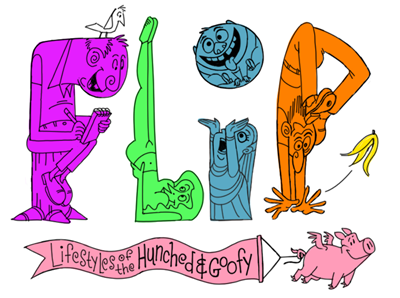During pre-production on Looney Tunes: Back in Action, I met with director Joe Dante about the animation director's position. While talking to Joe and the producers, I expressed my opinion that they should storyboard the movie before building any sets to avoid making anything they would not use. The producers laughed smugly, telling me they had five sound stages rocking out sets as we spoke. Ha ha! And furthermore, they will have only two months to board, but that's okay because they're going to throw a lot of bodies at it.
"The problem with that," I said, "is there's no time to think."
Joe, a nice, laid back kind of guy, suddenly slammed his fist on his desk. "YES!" he said. "They NEVER give you time to think!"
I didn't get the job. Thank GOD!
Time to think has become more and more scarce as computer technology allows work to be done faster. But don't blame technology! This is the same bean counting game producers have played for years, but CG has given them a great excuse to push it beyond reason.
I once read an interview with Billy Wilder where he talked about his creative process. He would sometimes spend days lying on the couch in his office - waiting for ideas to come. I have not had many jobs where I had a couch, or where lying around would be condoned, so I have had to rely on menial tasks to give me room to think - setting reinforcements tabs, copying and pinning up model sheets, pinning and unpinning storyboards, getting coffee that I don't drink. Thinking time. Once computers start making coffee, they will have completely removed all of those menial, thinking time tasks.
Tom Waits sees creativity as a being - like a spirit with which he has a tempestuous relationship. When a song came to him while driving, he addressed it aloud. "Excuse me." he said, "Can you not see that I'm driving? If you're serious about wanting to exist, then, I spend eight hours a day in the studio. You're welcome to come and visit me when I'm sitting at my piano. Otherwise, leave me alone and go bother Leonard Cohen."
I hate to hit the ground running with work. It's like jumping in a car and speeding off without really knowing where you're going but hoping for the best. I get lost, hit dead ends, run over skunks....not only creativity suffers, but productivity as well.
When I storyboard, I have to know the set before I get going. Sometimes this requires making something up because the designers have not had time to think and have to punt their work down the pipeline. I don't mind doing this, except when their final design bears no resemblance to what I did, even in the broadest sense, rendering my boards useless. Seems like a waste of money to me, but on paper, the production is flying along.
Ideally, as a film is passed from one artist to the next, the previous artist's thinking time serves as a springboard for the next artist's thinking time, and so on. The worst case scenario is where the board artist ignores the designs, the layout artists ignore the boards, and the animators ignore the layouts - everyone's thinking from scratch.
Thinking time should not be viewed as a luxury, but it is. Every moment you are not producing artwork is seen as money wasted. You may be playing ping pong to reboot your head, but what if the coordinator doesn't like the cut of your jib? Next thing you know, you're in HR trying to explain the creative process to the LEAST creative person in the building, even less creative than the ficus in the lobby, and also one of the most dangerous people in the building in terms of being able to fuck with your life. So with that in the back of your mind, sit down, look busy, and crank out something brilliant.
Get to work!
-Steve

Great article , Steve.
ReplyDeleteAs you know, so many of the old-time greats such as Milt Kahl talked about how they'd spend two or three days "just thinking" about their scene, also sketching out dozens of thumbnail drawings that might not look like much of anything to the average person who glanced at these quick "doodles" (although Milt's thumbnails are pretty amazing) ... then once their planning was complete -- including the "just thinking about it" part of the planning -- they'd sit down and animate the completed scene fairly fast. That was possible because they had it all pre-visualized in their head , with all the bad ideas and dead-end staging weeded out, and knew exactly how they were going to proceed.
I've been using Toonboom Storyboard PRO 3D, and now Toonboom Storyboard PRO 4 for my boards. The upper management loves to see it when I have my storyboard characters moving through 3D environments. But this also addresses the "know the set before I get going" problem. They have to have the environment finalized and built before I get to work. Now I doubt that would fly in a 2D/live action situation, but it's just an example how both parties benefit if you play your cards right. But this is coming from a freelancer. I'm sure it's a whole different ballgame in a proper studio.
ReplyDeleteBuster Keaton was famous for stopping production whenever he hit a tough problem and the crew played baseball until somebody came up with a solution. This was during a period when Keaton was creating two features a year.
ReplyDelete